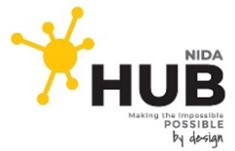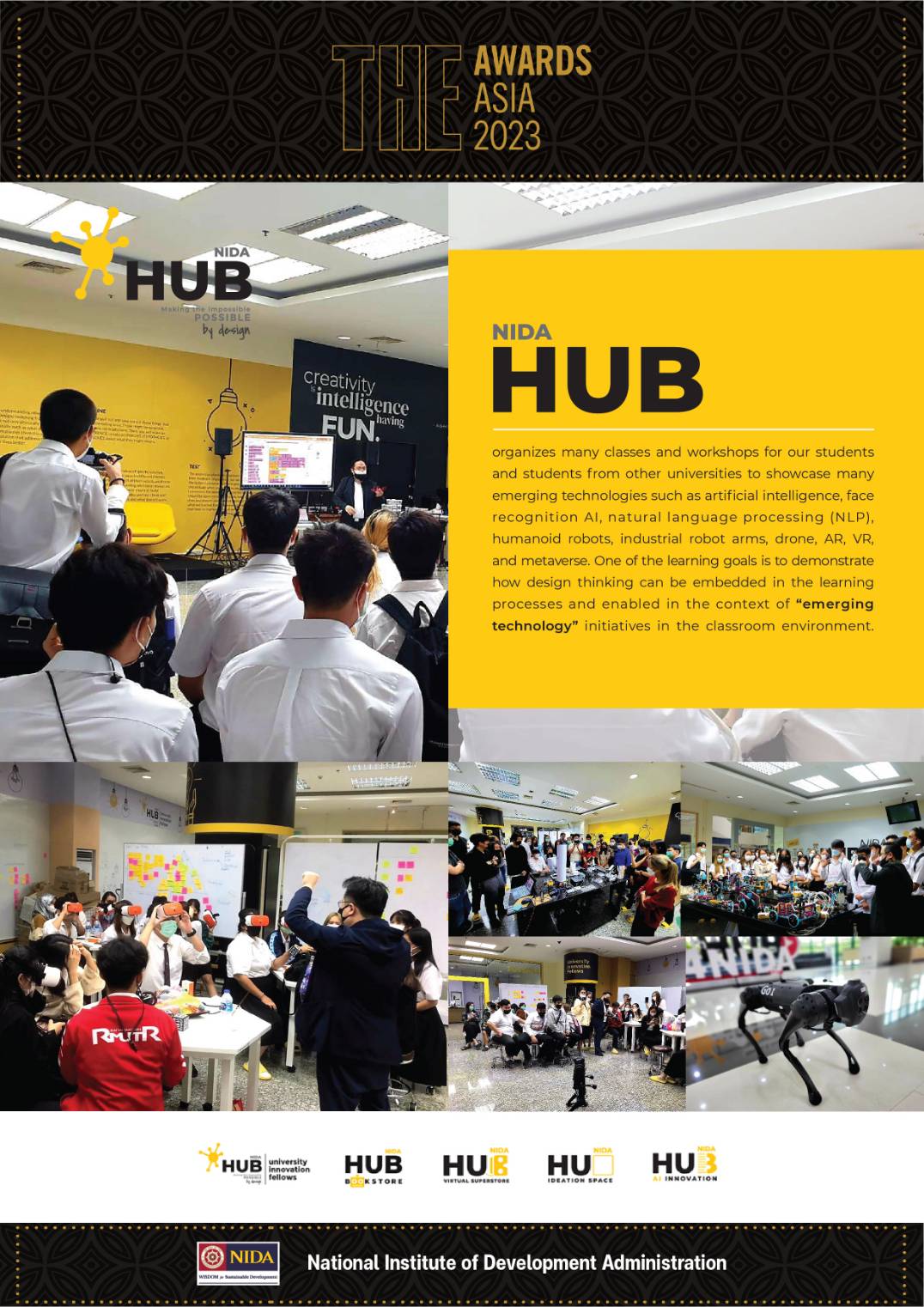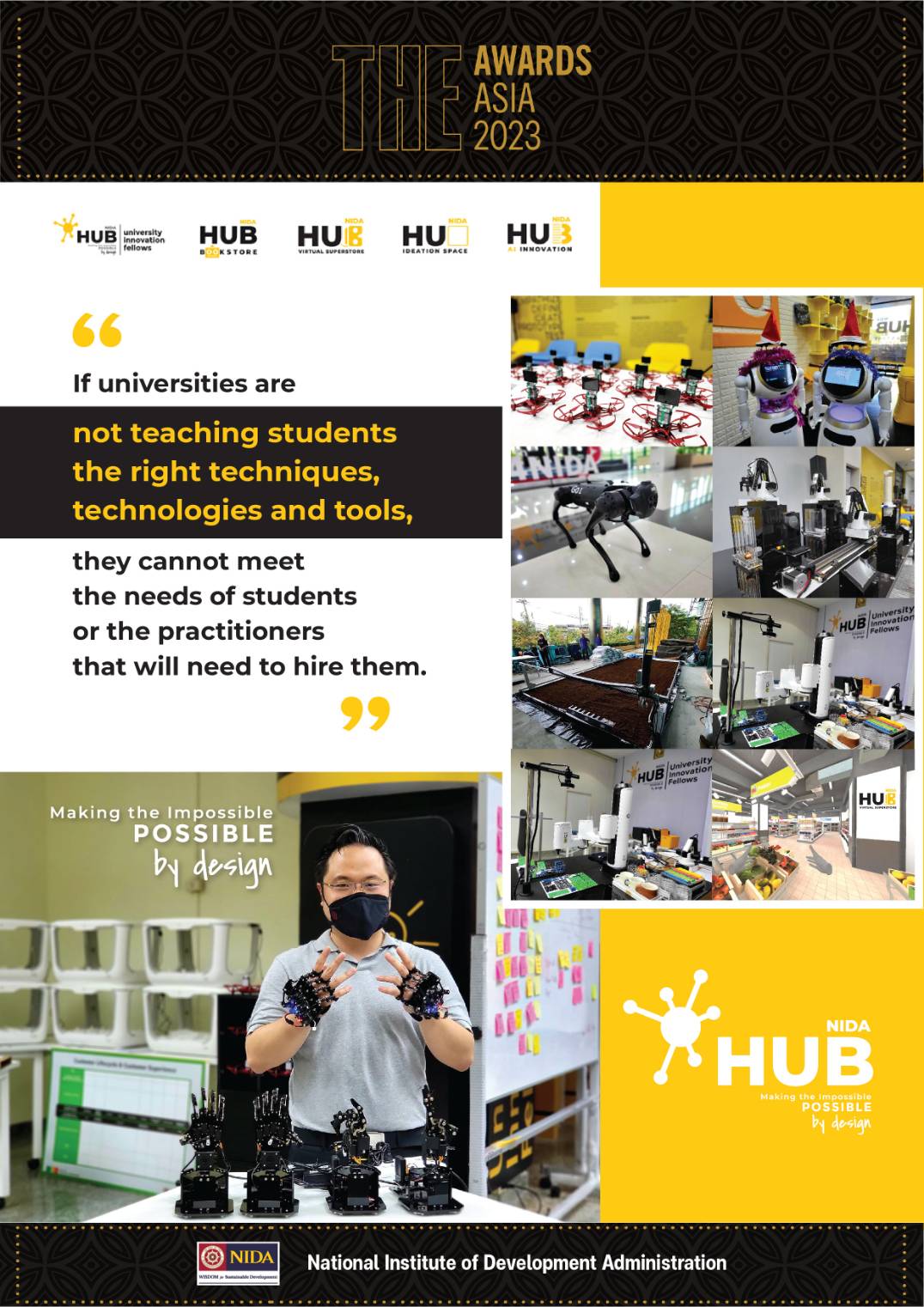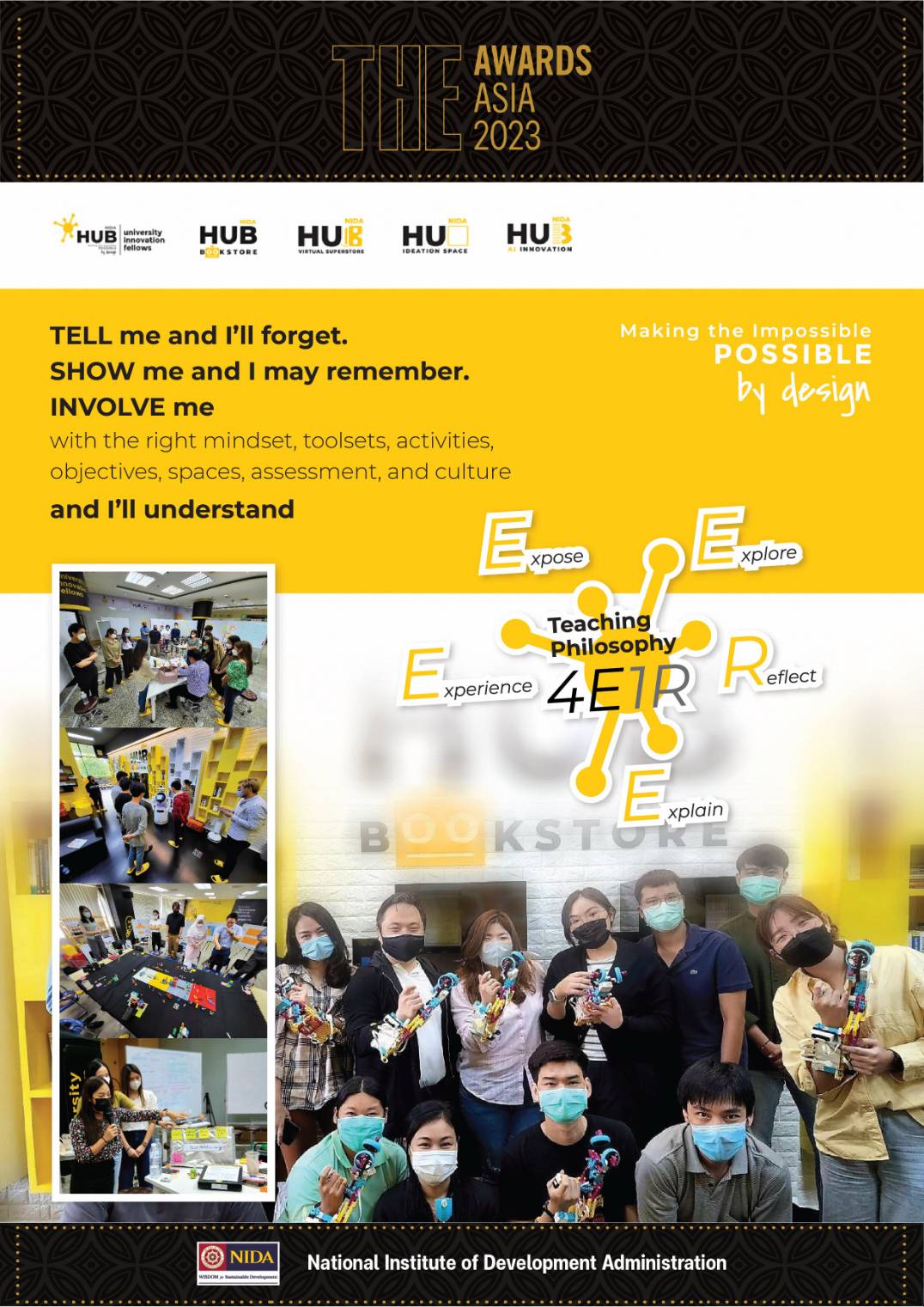
NIDA HUB Making the Impossible Possible by Design
The NIDA Hub initiatives have distilled seven key learning experiences, categorized as Objectives, Assessment, Spaces, Activities, Artifacts, Culture, and Network to create a design-oriented teaching, and learning environment
Objectives: Students have established skills in logical, analytical, critical, creative, and strategic thinking with technological-data-driven-IT backgrounds. Assessment: Students are able to define an initial set of both business and technical KPIs as well as business benefits that can be determined and assessed quantitatively or qualitatively. Activities: Numerous design-thinking-based activities are used to get students into a creative headspace, to elevate the energy of the teams, to uncover innovation opportunities, and to find inspiration outside the domain. Artifacts: Students are able to explore, expose, and experience tangible and innovative artifacts such as artificial intelligence technologies, big data, business intelligence, and analytics throughout their design journey of learning processes. Culture: Students are encouraged to build the “Yes And” mindset so that they learn how to accept and encourage the ideas from colleagues, to practice brainstorming, presentation, and communication skills, and to build the team dynamic interactively and collaboratively. Space: Setting up collaborative or innovative spaces for the design thinking journey for problem identification, idea generation, building prototypes, or testing ideas can influence the psychological state, productivity, mood, and creativity for students. The following learning spaces have been established since 2019 to encourage a design and innovative thinking environment:
- NIDA Design & Innovation Hub: A creative space that fosters collaboration for “design thinking and innovation” classes and workshops
- NIDA Smart Retail Labs – NIDA Hub Bookstore: An innovative data-driven based space that is embedded with advanced technologies for the future of smart retail businesses
- NIDA Ideation Hub: A creative and collaborative space that enables and encourages strategic and innovative thinking through advanced technologies and Lego® Serious Play® method
- NIDA AI Innovation Hub: An exclusive and innovative space that brings knowledge about digitalization and artificial intelligence together to showcase emerging technologies
- NIDA Hub Virtual Superstore: An immersive space where virtual reality and actual reality are matched with eye tracking and EEG technologies to showcase the future of smart retail businesses
Network: To encourage our students and faculty members to become agents of change at our school, NIDA Hub initiative made it mission to build the international network by joining the University Innovation Fellows and Faculty Innovation Fellows, the programs of Stanford University’s Hasso Plattner Institute of Design (d.school). For four consecutive years, NIDA has been chosen to participate in those programs. They work together, gather feedback, share what they learn, and develop distinct projects that not only address the campus’ needs but also make a positive impact on the communities around NIDA.
Overall, we always assess the feedback we have learned from integrating design thinking mindset and toolset with technology and innovation to deliver better teaching and learning experiences. Our faculty champions’ teaching methods also change from the traditional lecture-based styles to the hand-on workshops and case studies with tangible artifacts, while they can advance their action research from these advanced technologies.




